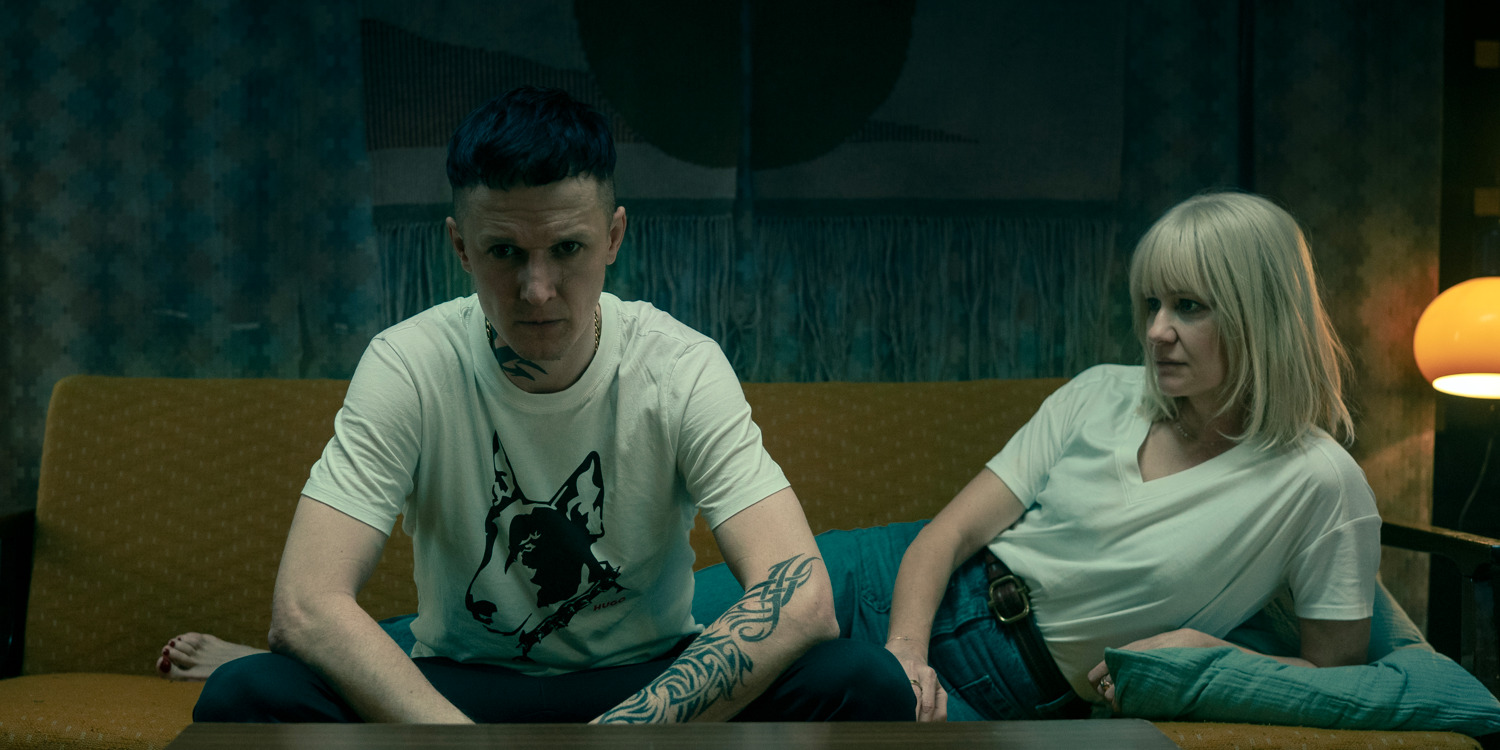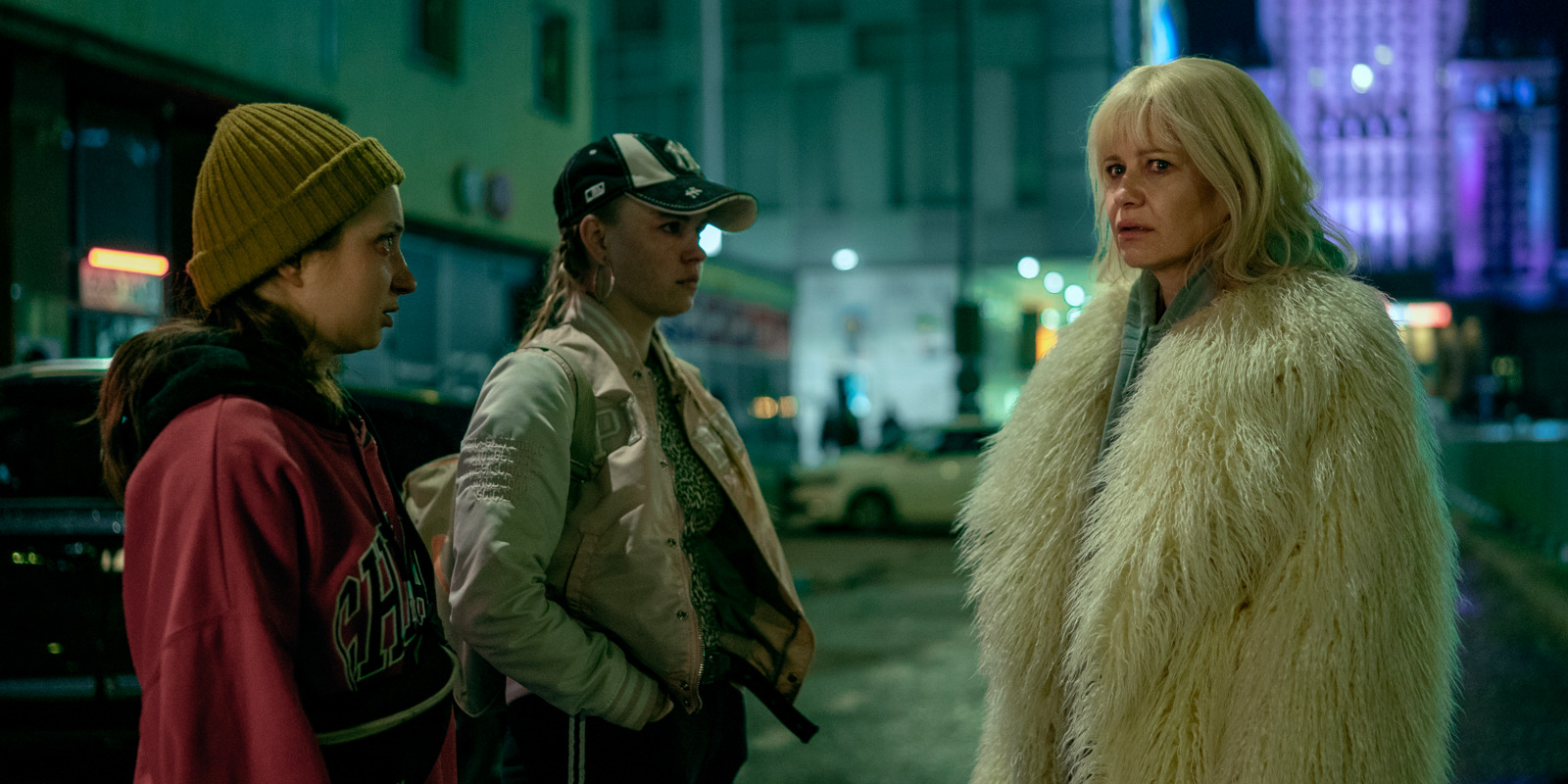Netflix’s Polish comedy show ‘Aniela’ (Stylized as ‘An!ela’) revolves around the life of a woman who goes from an affluent socialite to a down-on-her-luck divorcee. The titular character faces the biggest obstacle of her life when her husband, Jan, decides he needs a big change in his life, which includes the apparent end of their marriage. As a result, his now ex-wife finds herself moving out of high-end Warsaw and crossing the river to make a new, significantly poorer life for herself. Nonetheless, Aniela isn’t one to take her losses lying down. As a result, she seeks out the opportunities to make a quick, even if unethical, buck while continuing to prey on Jan’s downfall.
Along the way, the divorcee meets a number of colorful personalities, for better or for worse, who help her carve out a new place for herself. Aniela’s tale remains ripe with a number of entertaining elements, including complicated family dynamics, dangerous crime, and vindictive rap battles. Therefore, within this potluck of eccentricities, the show ends up holding on to crucial themes to retain an attachment to reality.
Aniela is a Fictional Story With a Grounded Thematic Narrative
‘Aniela’ doesn’t take any direct inspiration from real life for its storyline or characters. The show presents a completely fictional story penned by screenwriter Paweł Demirski that is brought to the screen under the direction of Jakub Piątek and Jakub Czekaj. As such, Aniela’s character and the comedically unique struggle experiences throughout her story remain devoid of off-screen roots. Even so, the narrative manages to retain some connections with real life through its far-reaching themes. Most prominently, the show offers a somewhat satirical exploration of the socio-economic class divide in Poland. The protagonist goes from silver spoons and ivory towers to rundown apartments and “working-class diets” in the blink of an eye.

As a result, Aniela’s character and the two worlds she’s stuck between inevitably highlight the drastic disconnect between the working class and the wealthy 10%. In real-life studies, it has been shown that Poland sports the largest income inequalities across Europe. The unbalanced economic distribution is most blatantly visible in a 2018 paper that shows that the top 1% accrued 13.4% of the country’s total income. In turn, the bottom 50% of the population only earns about 21.5% of the pot. Naturally, the social realities of Polish residents are informed by these economic statistics, indicating a clear and significant class divide.
Although Aniela’s narrative remains disinterested in exploring the socio-economic ramifications of this reality in depth, the character’s storyline continues to be shaped around this issue. As a result, even her most outlandish adventures, such as passing crushed aspirin off as hard drugs, become faintly underlined by a realistic premise. Furthermore, her complicated dynamic with Jan highlights the gender-based financial inequality, specifically regarding divorces. Statistically, 24% of women end up struggling financially in the aftermath of a divorce. This percentage remains, in part, a reflection of the societal distribution of professional and domestic responsibilities between heterosexual couples. Still, these real-life complications and context only provide partial authenticity to themes of the otherwise entirely fictitious show.
Aniela Dabbles in the Polish Rap Industry
One of the key storylines in ‘Aniela’ stems from the titular character’s decision to chase after monetary success and petty satisfaction through “discovering” new rap artists. Banan, a fictional rap/hip-hop artist, sports ties with two of Aniela’s biggest rivals throughout the story. Therefore, in order to fight fire with fire, she begins investing her time and effort into fueling the careers of Banan’s rivals, Viola and Lena, aspiring rappers. Even though none of these characters or their public feuds are directly inspired by actual musical artists or pop culture, their stories present a depiction of rap’s growing popularity in Poland.

As per Spotify, one of the world’s biggest music streaming platforms, Poland’s inclination toward Rap music doubled in popularity in the late 2010s. By the early 2020s, rap music accounted for 23% of all music that Polish users listened to on the platform. The country has shown an increasing interest in the music genre through notable big-name artists like Taco Hemingway, Quebonafide, and Bedoes, as well as many other local creators. Therefore, the show’s depiction of the rising popularity of the rap scene adds a layer of authenticity to the story’s regional storylines.
Read More: Aniela Ending Explained: Does Aniela Leave Praga?


